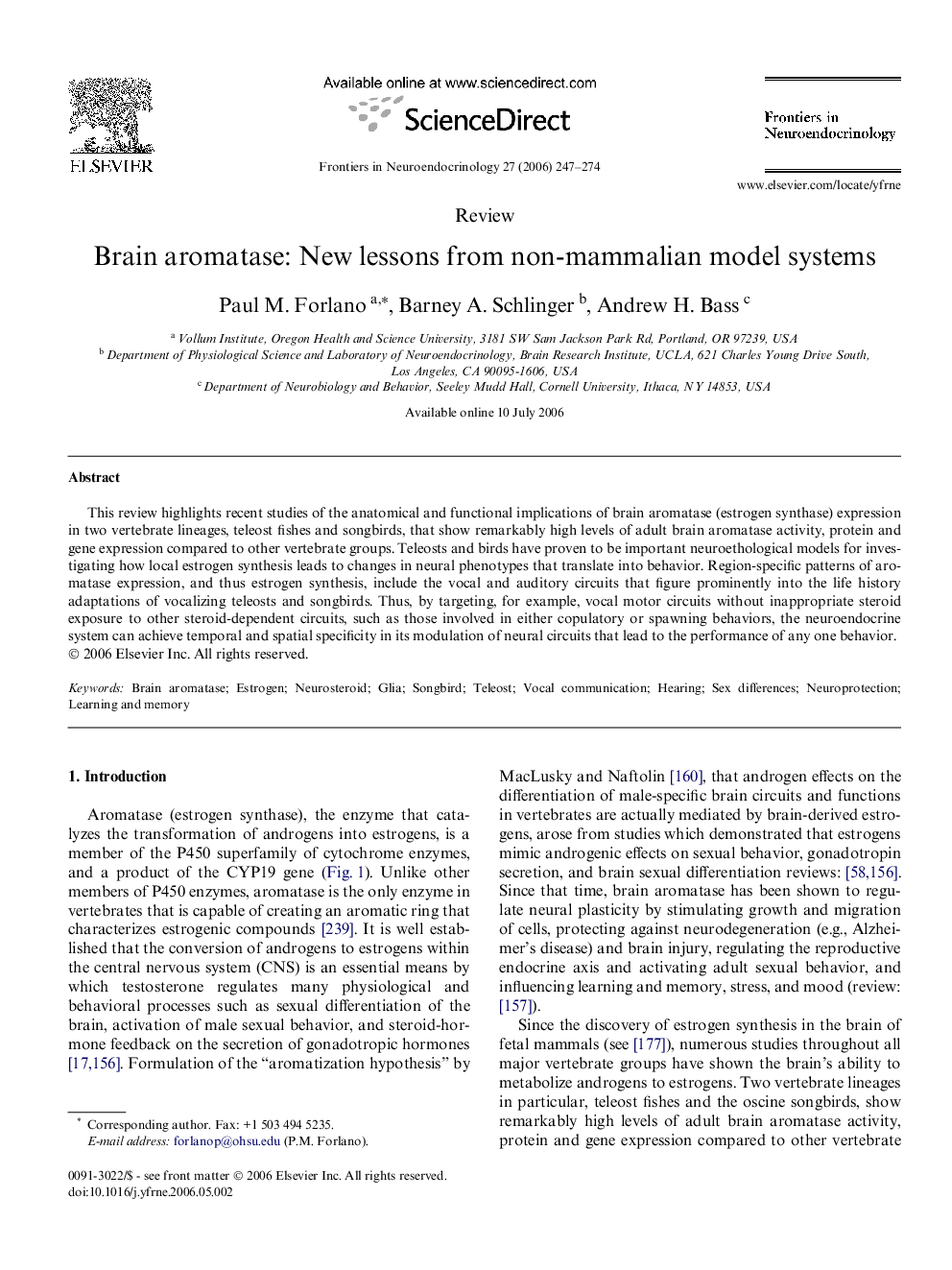| Article ID | Journal | Published Year | Pages | File Type |
|---|---|---|---|---|
| 2799576 | Frontiers in Neuroendocrinology | 2006 | 28 Pages |
This review highlights recent studies of the anatomical and functional implications of brain aromatase (estrogen synthase) expression in two vertebrate lineages, teleost fishes and songbirds, that show remarkably high levels of adult brain aromatase activity, protein and gene expression compared to other vertebrate groups. Teleosts and birds have proven to be important neuroethological models for investigating how local estrogen synthesis leads to changes in neural phenotypes that translate into behavior. Region-specific patterns of aromatase expression, and thus estrogen synthesis, include the vocal and auditory circuits that figure prominently into the life history adaptations of vocalizing teleosts and songbirds. Thus, by targeting, for example, vocal motor circuits without inappropriate steroid exposure to other steroid-dependent circuits, such as those involved in either copulatory or spawning behaviors, the neuroendocrine system can achieve temporal and spatial specificity in its modulation of neural circuits that lead to the performance of any one behavior.
